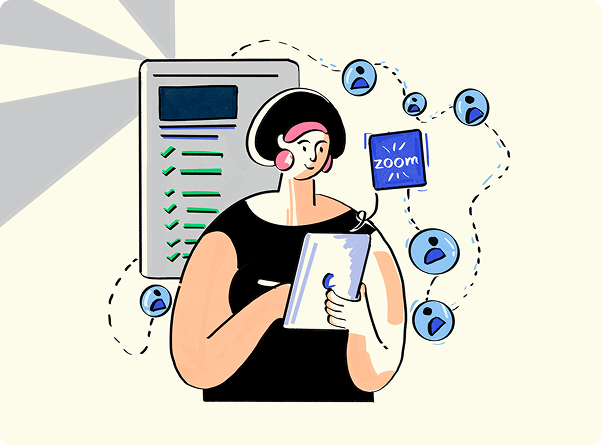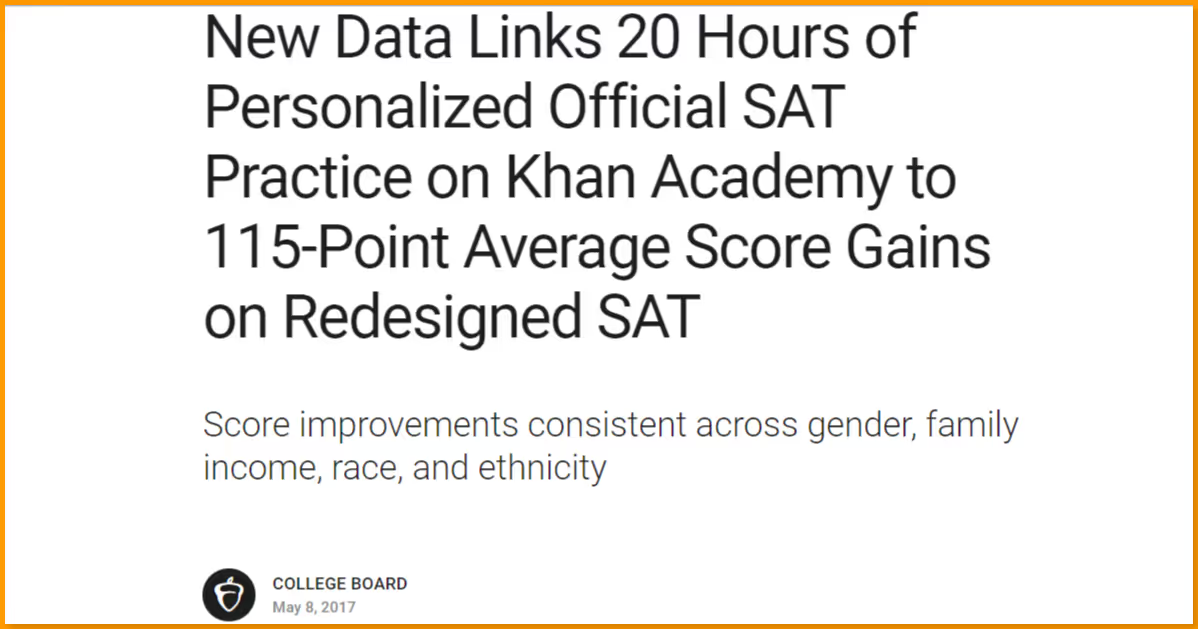


Key Takeaways
- Approach the digital SAT with a problem-solving mindset, focusing on understanding questions, managing time, and selecting optimal prep resources.
- Familiarize yourself with official digital SAT tools, including the Bluebook app, test instructions, and inbuilt features for a smoother test experience.
- Seek expert help when needed to boost understanding, refine strategies, and target challenging areas for score improvement.
Since the College Board's official announcement about the digital SAT, the most common questions tutors hear are regarding test prep. That’s hardly surprising because the digital SAT works quite differently from the linear, pencil-and-paper SAT.
We’ve had numerous conversations with SAT tutors who shared with us the kind of questions their students asked. This blog covers everything you need to know about how to prepare for the digital SAT. In addition to the tips for the digital SAT, we’ve also discussed what to expect during the actual SAT.
But first, a quick question: does preparing and studying for the SAT improve scores?
Test prep and improvement in scores
The SAT isn’t your regular classroom test. So if your students prepare for the test, will it improve their SAT scores? Is there evidence that connects test prep and score improvement?
A few years back, the College Board, which is the official body that owns and conducts the SAT, released the findings of its research. After a full year of data and a large enough sample size, the College Board reported that studying for the SAT clearly led to better scores.

So yes, preparing intelligently, using digital SAT resources for studying, and by implementing smart test-taking strategies for the new SAT, your students can expect a much better score.
With that out of way, let’s move to the top 6 strategies to prepare for the digital SAT.
How to prepare for the digital SAT
1. Study with a problem-solving mindset
The adaptive SAT is not a test of how much you can recall from some set of prescribed books or even a list of formulas. So don’t approach the SAT as a class quiz that you can ace with some last-minute reading.
The College Board designs every SAT to evaluate some unique skills. Central to all these skills is your ability to understand each question, treat it as a problem and solve it, and select one particular choice as the best answer.
If you read the above lines again, you’ll notice three important aspects:
- Understand the question: Pay attention to what you’re being asked to do. Not all questions will be worded directly, so be prepared to read the given information and the question again. After all, the SAT is about measuring your college readiness, so it’s only natural.
- It’s about problem-solving: Most math questions will require some thinking; formula alone won’t suffice. Pretty much the same way, the Reading and Writing questions require you to interpret the language of the passage correctly.
- One of the choices is always the correct answer: Even if none of the answers seems to fit perfectly, one of them will still be the right choice. When this happens, pick the closest option and don’t leave the question blank.
2. Plan to manage time
Sure, you will need to use your time wisely on the SAT. But the time constraints aren’t so severe that they’d be impossible to manage.
The time we recommend students manage is the period before the test. First, choose test dates carefully. From now until test day, students must have enough time for SAT preparations.
Every student is different, so there’s no one definition of adequate time. Probably it will be a good idea first to take a free digital SAT. The results of this practice test will show how ready the student is and how much preparation time they likely need.
The second time is the margin required. Not everyone gets the score they were looking for, on their first SAT attempt. So be sure your students have enough time to register and take a second SAT. For the conservative test-takers, we recommend they start early to have enough room to take the SAT three times.
3. Select test-prep tools
No prizes for guessing, but students are wired differently.
For some students, more practice tests do the trick. For some, the foundation-level orientation material is vital. For a few others, practice problems without the clock ticking is required. And then there are others, whose principal requirement is to improve focus, instead of merely putting in more study time.
One-size-fits-all solutions don’t work. Even within a group of students who need help with the same section, say the Reading and Writing section, they may need different test-prep support to excel.
Self-paced learning, online coaching, self-study, personal coaching, frequent counseling, different student materials, different study sessions… figure out what you need, as early as possible.
So here’s the tip most students realize a little too late: decide how you’ll prepare for the SAT and decide soon. The earlier you do this, the more time you will have to focus on whatever is important. Test prep is about making important decisions early on.
4. Prioritize different schedules
It’d be naive to assume that the calendar of a high school senior has a lot of free time. Quite the contrary. With tons of activities on hand, a typical high school senior is always short of time. And what you have in shortage, you should spend wisely.
Which is precisely the reason you want your students to juggle their activities and prioritize them well. As a rule, the better your students manage their calendars, the higher their SAT scores. Be realistic and leave some room for other activities, including sports, if required.
Plan ahead, schedule accordingly, and then stick to the timetable no matter what. That’s the secret to cracking the SAT.
5. Use all official resources
We believe students don’t use the official digital SAT resources as much as they should. In particular, there are three key resources we’d like to stress:
a) Use the Bluebook test
The digital adaptive SAT is conducted over the Bluebook app. The same app also has various full-length practice tests. They accurately simulate the real SAT, so be sure your students take it.
The app also has a Test Preview option, where the students can practice a short set of questions. They are neither scored nor timed, providing a good precursor to the actual test.
Don’t forget that Khan Academy is the official partner of the SAT, so students would also do well to use the Khan Academy SAT resources.
b) Memorize the instructions
Every Bluebook full-length practice test contains instructions that the actual SAT will use. These instructions will not be changed, so it’s a good idea for students to understand and memorize them in advance. That’d not only save but considerably reduce anxiety on the test day.
c) Get familiar with the features
Just like the instructions, the official practice tests have the same features as the actual SAT. On the one hand, you have assets like the inbuilt calculator and the formula sheet. On the other, there are functionalities like highlighting a part of the text, zoom feature, crossing out a choice to eliminate an incorrect answer, the chance to mark questions you want to return to, and so on.
Students should familiarize themselves with all these features so that on the test day, using them would come naturally.
6. Ask for help
Sure, there’s glory in being self-reliant. But it’s smart to ask for help when you need it. Nearly all students, at some stage or the other, feel a little lost. For some, it’s the grammar rules that become frustrating. For others, it’s the math section where their scores refuse to grow.
Instead of trying to find all the answers yourself, ask proven experts. If you are availing some coaching, discuss your doubts with the tutor. If you’re in self-study mode, check out online forums dedicated to SAT. Or, better still, check out if there’s some tutor whose few hours you can buy.
Expert help and guidance can leap-frog your score into a better bracket, so don’t hold back. Simply seek help and clarify your doubts.
Conclusion: What to expect during the exam?
The digital SAT uses the adaptive testing style. This means that the student’s performance in the first module of each of the two sections decides the difficulty level of the questions in the second module of the respective section.
If a student performs well in the first module, the SAT algorithm serves them mostly difficult questions in the second module. That would be actually good for the student, because no matter what, they always score above a certain range in this case.
Against that, students who did not do well in the first module will see mostly easy questions in the second module. However, in this case, their sectional scores will be capped, irrespective of how well they do in the second module.
Other than that, your students would have found from the official digital SAT prep resources that the SAT Reading and Writing section is always served first, followed by the SAT math section. Each section has two modules. The student may move around freely within a module, but once they finish a certain module, they may not go to that module again.
The SAT is about the right resources, expert coaching, and smart test-taking strategies. EdisonOS is fully geared to help your students achieve a great SAT score. To learn how you can partner with Edison and help students do their best, schedule a demo.
If you’ve already experienced Edison earlier, you can simply talk to our team for the next steps.
Frequently asked questions
Yes, you can skip questions but it’s not a good idea. Here’s why. The SAT doesn’t penalize you for incorrect answers, so you won’t lose anything even if your answer is wrong. Also, the multiple-choice questions on the SAT have four choices, so if you can correctly eliminate even one answer choice, you’ll be left with three options. That means there’s a 33% probability you’ll get the answer right. Why not take your chances?
No, the digital SAT isn’t graded on a curve. That means it isn’t scored based on how other test-takers have performed. However, the College Board uses something called ‘equating’. This is done to ensure students who took the SAT on a certain day have no unfair advantage or handicap compared to students who took the SAT on other days.
Your goal of improving the digital SAT score can be achieved in three stages. First, take a practice SAT. Understand the difficulty level of questions, and identify the areas you need to work on the most. Second, select the right study materials, prepare a study plan, and fully familiarize yourself with the digital interface of the SAT. And third, devise a SAT strategy that builds on your strengths and implement it during the actual SAT.
Yes, even the test-optional universities accept digital SAT scores. In any case, the pencil-and-paper version of the SAT has been discontinued. Hence, for most universities, the scores of the digital SAT become an important indicator of the college-readiness of applicants.

Tutors Edge by EdisonOS
in our newsletter, curated to help tutors stay ahead!
Tutors Edge by EdisonOS
Get Exclusive test insights and updates in our newsletter, curated to help tutors stay ahead!
Recommended Reads
Recommended Podcasts












.png)
.webp)
